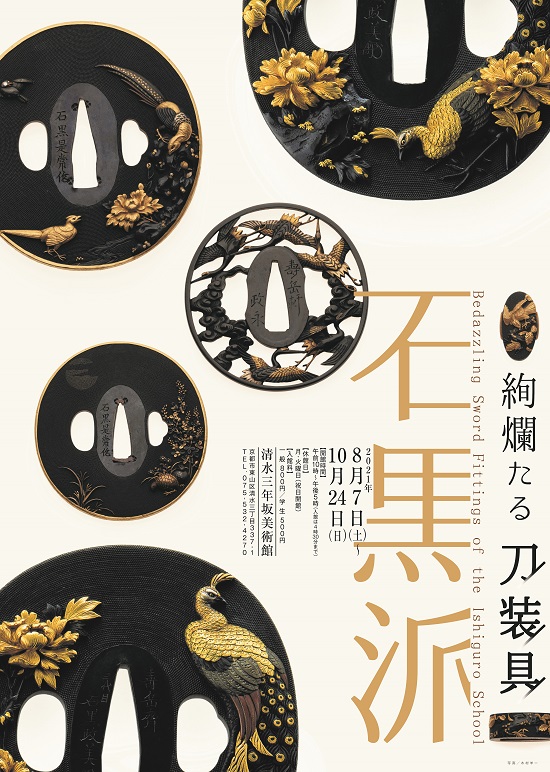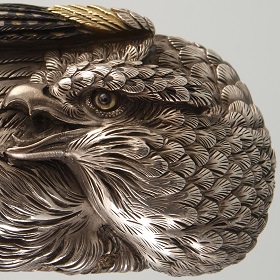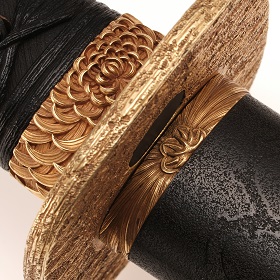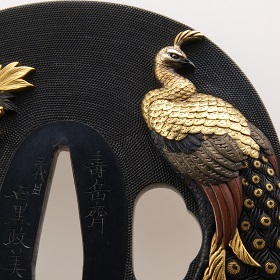
Bedazzling Sword Fittings of the Ishiguro School
Sword fittings are for preserving and protecting swords. In addition to the tsuka (hilt) by which the sword is gripped and the saya (scabbard) used to sheath the sword, included among them are as well the tsuba (sword guard), the fuchigashira (sword-hilt collar and pommel), the menuki (hilt ornaments), the kozuka (accessory knife), the kogai (hairpick), and the kojiri (scabbard end). These fittings had not only a practical use, however; they also functioned as expressions of the owner’s aesthetic sense as well as his authority.
In the field of sword fittings, the Goto Clan was in the service of the Bakufu as metalworkers for generations from the time of the 8th Muromachi Shogun, Ashikaga Yoshimasa. Among the many members of the Goto Clan spread around the metalworking landscape, Yokoya Soyo (1613-1690) appeared from among the disciples of Goto Injo, with Yokoya Somin (1670-1733) later succeeding him as head of family and flourishing. While still in his twenties, Somin resigned his Bakufu post and went on to innovate beyond the Goto Clan’s famed iebori metal decoration style by including among other techniques katagiribori, chiseling that simulated the brushwork of traditional Japanese painting, into his repertoire. His disciples were the source of further branches, and Somin later was known as the “father” of what came to be called “the machibori style.”
Together with the Yokoya School, the Ishiguro School, which was founded by the first Ishiguro Masatsune (1760-1828), were noted practitioners of the machibori style. It established the technique of colorfully emblazoning metal with takabori iroe flowers and birds, and from late Edo until the end of the era it had many disciples. They were particularly adept at powerful renderings of fierce birds of prey and in the present day have many aficionados. The present exhibition displays for your viewing pleasure the entire range of the museum’s collection of Ishiguro School sword fittings beginning with its most famous practitioners, Masatsune and Masayoshi. Feast your eyes on their bedazzling displays of flamboyant, precisely detailed art.
 2025-12-17 / 2021-08-02
2025-12-17 / 2021-08-02 

